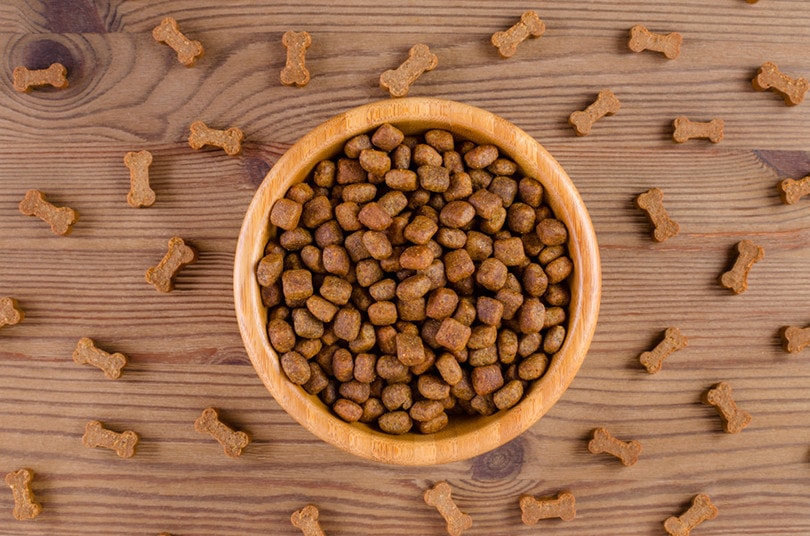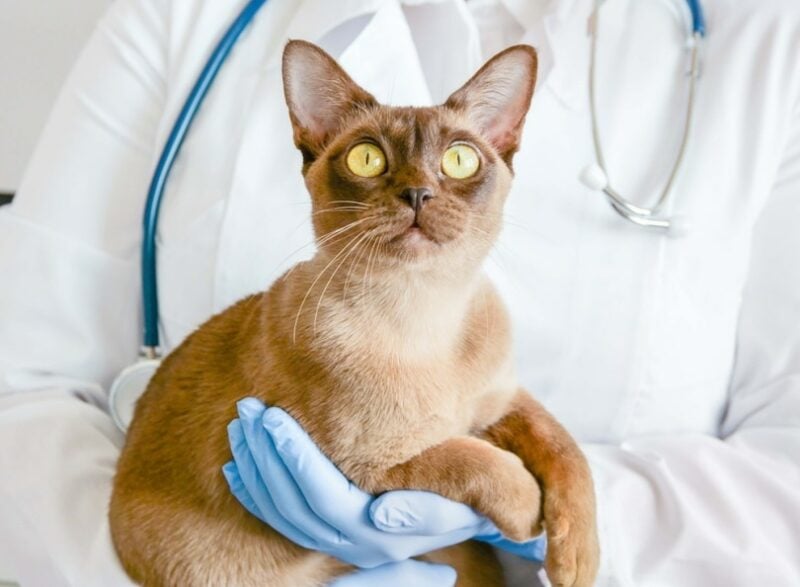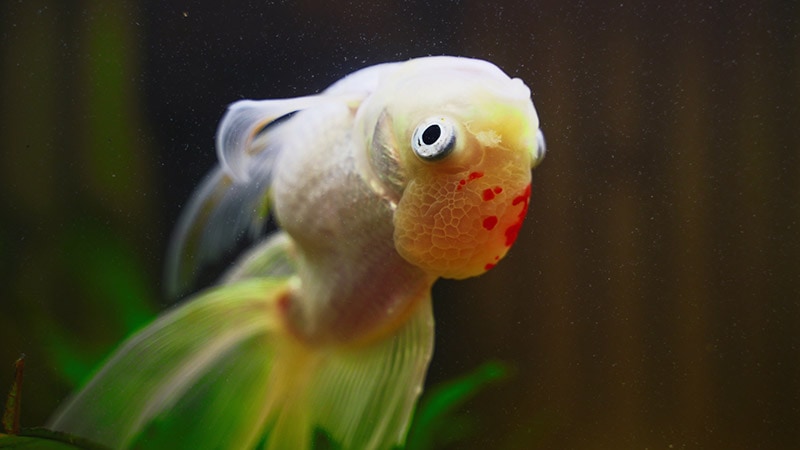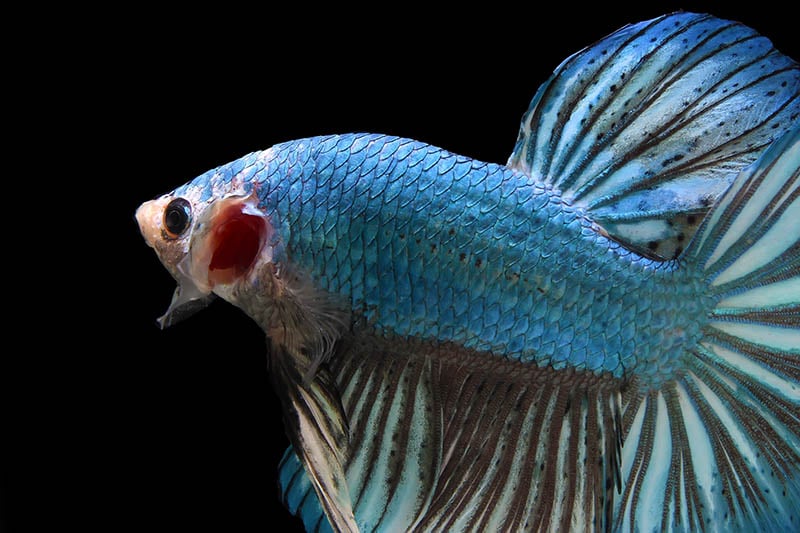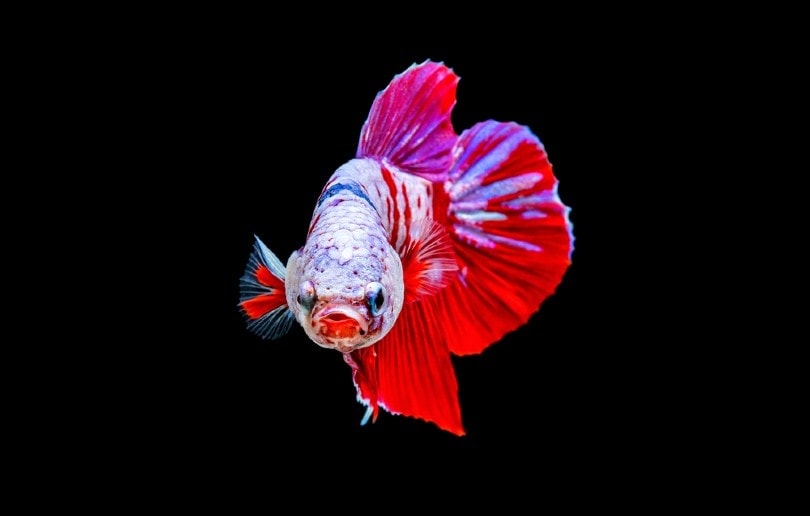Dog Ate a Prenatal Vitamin? Here’s What To Do (Vet Answer)
Updated on

Prenatal vitamins contain high concentrations of iron,1 calcium, and vitamin D, which can be extremely toxic to dogs, especially if they swallow more than one. If this happens, you must call your veterinarian immediately.
If you can’t reach your vet, call a local animal poison control center, which in the US are:
Both organizations can be reached 24 hours a day, 365 days a year.
What to Do After Contacting Your Veterinarian
Your vet or a professional from an animal poison control center will guide you on the next steps to keep your dog safe, but you can also be a step ahead by doing the following:
- Monitor your dog closely: Note any signs of discomfort or unusual behavior, such as vomiting, diarrhea, lethargy, or excessive thirst.
- Keep the bottle of prenatal vitamins handy: If you need to take your dog to the clinic or an emergency animal hospital, the vet will be able to treat your pet more quickly and efficiently with accurate information on dosage and Ingredients.
- Never induce vomiting: Don’t give your dog hydrogen peroxide or any other substance unless specifically advised by your veterinarian. It could cause more damage than the product itself.

What Are the Signs of a Prenatal Vitamin Overdose in Dogs?
Signs of prenatal vitamin poisoning vary depending on the dose ingested and the size of the dog but most commonly include:
What Ingredients in Prenatal Vitamins Are Toxic to Dogs?
Although iron, calcium, and vitamin D are not toxic to dogs, their high concentration in prenatal vitamins makes them potentially dangerous for our canine companions. Additionally, some brands may contain xylitol, a sugar substitute that can cause life-threatening toxicosis in dogs.

How Much Iron Is Toxic to a Dog?
The toxicity of iron to dogs depends on the size of the animal and the amount ingested. According to the American College of Veterinary Pharmacists, iron toxicity in dogs can be observed at doses above 20 mg/kg of elemental iron.
For reference, some prenatal vitamins can contain 60 to 65 mg of iron in each pill, so a dog can develop severe iron toxicity even if only a few capsules are ingested.
Examples of iron toxicity dose according to the dog’s weight:
| Dog’s Weight | Breed Example | Iron Toxicity Dose |
| X-Small Breeds (0.45–4.6 kg) | Yorkie, Chihuahua | > 9 mg |
| Small Breeds (5–11.4 kg) | Pug, Boston Terrier, Poodle | > 100 mg |
| Large Breeds (18.6–31.8 kg) | Boxer, Cocker Spaniel | > 372 mg |
As you can see, a tiny Yorkshire is at high risk of iron toxicity from swallowing even half of a prenatal vitamin containing 60 mg of iron. A Boxer must ingest a bit more before experiencing side effects.
But even if you own a huge breed, like a Great Dane, don’t minimize the risk of iron toxicity from ingesting prenatal vitamins—contact your veterinarian without delay. Since iron poisoning in dogs can vary in severity, from vomiting and diarrhea to liver and heart failure, it is essential to take action quickly to ensure your pet’s safety.
In any case, oral doses of elemental iron between 100 and 200 mg/kg are potentially fatal.
What Is the Treatment If Your Dog Ingested Prenatal Vitamins?
Your veterinarian will establish a treatment protocol based on the dose ingested, your dog’s weight, and the severity of symptoms.
Gut decontamination, which is the process of removing a toxic substance from the gastrointestinal (GI) tract to reduce its absorption or enhance its elimination, may be needed, as well as intravenous fluids. Your dog will likely be kept under observation to follow the evolution of their side effects.
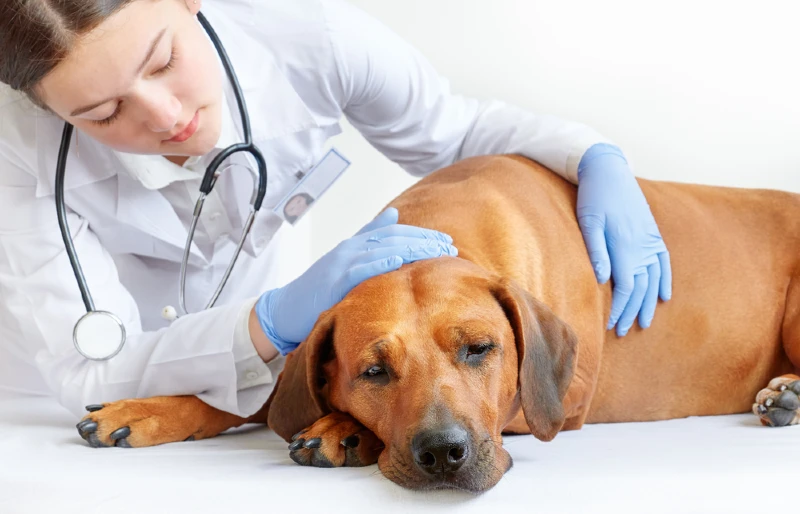
Tips for Keeping Your Dog Safe
Severe iron toxicity takes a great deal of time and effort to treat effectively. This is why prevention is the best cure. Be sure to keep your prenatal vitamins and all medications out of reach of your pets.
Also, keep the animal poison control center emergency numbers handy.
Closing Thoughts
Ingesting just one prenatal vitamin can cause serious harm to a dog. Therefore, err on the side of caution, and immediately contact your veterinarian or an animal poison control center (whichever you can reach first) if this situation occurs.
Featured Image Credit: Nemer-T, Shutterstock






